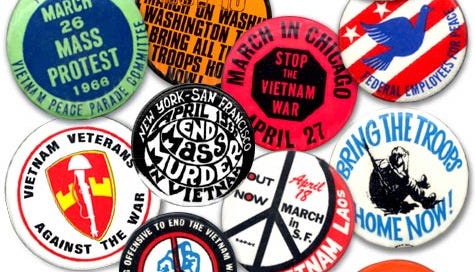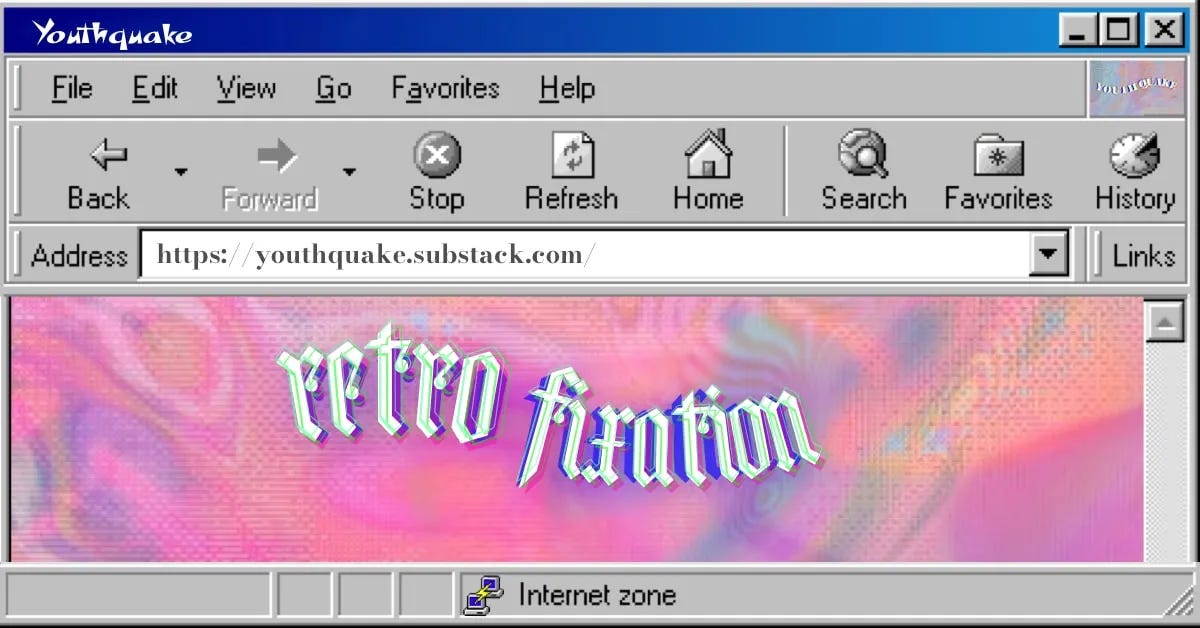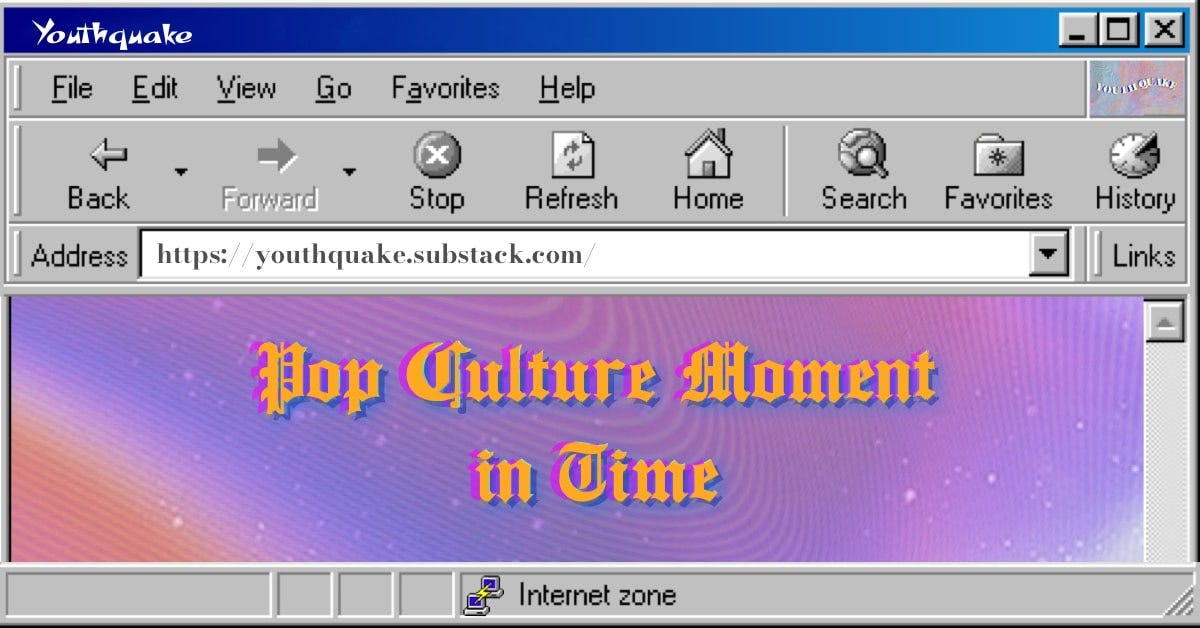Youthquake Time Warp: 1971 Edition
TGIF content includes: Review for "1971: The Year That Music Changed Everything," a Q & A with Docu-series' Music Supervisor Iain Cooke, and More
Retro Fixation is the dedicated series of our enchantment with the past, which will always undeniably resurge since history has a habit of repeating itself. So step back on this journey below into a parallel time interval.
1971 is heralded as the “most creative, most innovative, most interesting” year in rock music by author David Hepworth of Never a Dull Moment. A deep dive into the explosive year that perceptively shifted the world. After you stream Apple Tv+’s newest docuseries, 1971: The Year That Music Changed, which highlights David’s book, it’s evident why.
Each episode mirrors a chapter of David’s book, storytelling uniquely featuring musical pioneers like Iggy Pop, Joni Mitchell, James Brown, Elton John, Tina Turner, Lou Reed, Curtis Mayfield, George Harrison, Ravi Shankar, Marc Bolan, Gil-Scott Heron, Carol King, Alice Cooper, and David Bowie. It’s compelling from the moment you press play and first hear the powerful words from Crosby, Stills, Nash, and Young’s Ohio.
The 8-episode docuseries aren’t just a collection of musical experiences; it’s an amalgam of political turmoil, a sexual revolution, liberation movements, and cultural awakening. As if creating a rich mosaic that took over the pop acts of the sixties, tiling with innovative subgenres, each made their intricate pattern of sounds. Director James Rogan, co-directors Asif Kapadia & Danielle Peck, and the executive producers highlight an incredible array of musicians and songwriters that bring life to the year with an equally immersive soundtrack mirroring the staggering parallels between 1971 and 2021.
⚡ Youthquake Chats with Award-Winning Music Supervisor Iain Cooke
How challenging was selecting each song to story tell the historical events of 1971?
Iain Cooke: It was certainly a challenging project. The editing process was around two years, and obviously, the editors, directors, and producers task at hands is to make sense of this year. The various story arcs, so I think that the individual choices were more edit-driven; and my challenges were the focus primarily on securing the rights and helping them to tell the story that they wanted to tell. Obviously, there are huge, huge artists and songwriters involved in the series, from the Rolling Stones to John Lennon to Aretha Franklin to Joni Mitchell to Carole King and everywhere in between. So some of the biggest artists/songwriters of all time and needed to get their permission in order to do the stories justice. So it was a huge challenge.What’s the process like for a docu-series as opposed to working on a film?
I think, certainly the length of the project was challenging itself. I first became aware of the project, six years ago when producer James Gay-Rees sent an adoption to a manuscript by David Hepworth called, Never a Dull Moment. That book was the premise for the films that we were intending to make over the course of several years that the former evolved into the eight, 45-minute, episodes. A lot of my work is in drama and fiction where it’s a blank slate and, really, you’re trying to discover the tonality of the piece and the music aesthetic where you have a blank slate. Whereas a music documentary series that focuses on one year narrows that somewhat. We did absolute classic and pivotal albums that were released or recorded during 1971. We had rich pickings and as we celebrate the 50th anniversary of the year and some of the albums, they undoubtedly stand the test of time.What were the biggest challenges for evoking this bygone era— I mean there’s just so much to choose from in 1971.
Yeah definitely. I think editorially we really wanted to do a deep dive on some of the artists and hone in on their specific stories. Particularly the parallels between some of the bands at that time. There’s a whole series worth of albums that we didn’t feature, I think, we had one hundred fifty songs across the series— there are fifty-eight different artists, there are one hundred and eight different songwriters. It’s a huge, huge, body of work. It was challenging to piece that together over the editing process and help the storytellers with their vision and to tell the story that they wanted to tell.Was picking the more obscure tracks a conscious effort to showcase?
I think it was an editorial decision. We didn’t make a grand plan to go down either route I think it’s important that some of the hits and big songs of that year are showcased but, also, it’s really important for a documentary series of this nature to showcase the B-Sides, the album tracks, and deeper cuts. Certainly, from a narrative persepective some of those lesser known cuts help shape the story better than the radio singles.Did you have any song ideas beforehand; does the criteriea selection ever get overwhelming?
We pretty much mapped out every song that was released in or recorded during that year as a kind of a modest list, so we knew what the kind of finite picture looked like. Then really it was into the meat and bones of the story and the artists and see which songs reveal themselves during the edit process.
📢 The Revolution Will Not be Televised
In an actual youthquake moment, Angela Davis was terminated from UCLA due to her membership in the Communist Party USA and the Black Panther Party in 1969. So for current conservatives to droll out terms like ‘cancel culture’ because they get smacked in the face with accountability is astonishingly frustrating.
Angela Davis was an actual political prisoner at the hands of then-POTUS Nixon and FBI director J. Edgar Hoover, who targeted members of the Black Panther Party. Their purpose? To surveil, infiltrate, discredit, and disrupt domestic American political organizations that they deigned criminal and dangerous to society, known as COINTELPRO.
This FBI program sought to disband and destroy political organizations by targeting The Black Panther Party, Malcolm X, the anti-Vietnam war movement, the Weather Underground, and Dr. Martin Luther King, to name a few.
Without the brave help of then-unnamed activists who broke into a Philadelphia FBI office during the Joe Frazier vs. Muhammed Ali fight, the world would never have known. The original intention was to destroy draft papers to protest the Vietnam war but later helped expose stolen documents of much more sinister government efforts of political repression.
Davis was prosecuted for conspiracy and jailed for some eighteen months for a crime SHE DIDN’T COMMIT before being acquitted in a federal trial. This moment in Angela’s life is also featured in the mesmeric Apple Tv+ docuseries and others I revere. More importantly, it brings me to the crucial importance of Angela Davis’s existence and her body of work. For instance, Are Prisons Obsolete? a vitally mighty book in the wake of America’s overpopulated industrial prison complex.
I highly recommend looking into unlearning the conditioned, whitewashed history spoonfed to students across America. I also recommend reading James Baldwin’s uplifting letter to Angela Davis.
Despite being a noughties’ centric nostalgic wonderland, I’m fascinated with the ‘60s/’70s era. The revolutionary period was a liberation of identity expressed through a sense of style. Labels and high fashion may be frivolous luxuries or investments, but style is something you can’t teach— so it’s bought at ridiculous amounts.
You can characterize so much with a stylized concept; fashion is walking art that takes inspiration from anywhere. Similarly to music, it changes depending on popular culture. So since the current turmoil of today’s time echoes that of the anterior time, here are some modern ‘70s-inspired looks.

A time warp inception as the time parallels of 1971 and 2021 continue with the 50th anniversary of Marvin Gaye’s incendiary track, What’s Going On.
The track’s highlighted in the fantastic first episode of the Apple Tv+ docuseries. It also takes me back to post-September 11th, 2001, a day that entirely ominously changed the U.S., similar to the domestic terrorism and insurrection of January 6th.
In 2001, an array of the most popular recording artists came together (as Artists Against AIDS Worldwide) shortly before tragedy struck to raise awareness and benefit the AIDS programs in Africa and other regions with an album containing various versions of the Marvin Gaye classic. After the song’s release, portions of the song also went towards the American Red Cross’s September 11th funds.
We’re keeping busy and playing catch-up this weekend as our inboxes are overflowing. However, don’t miss out on our following Youthquake Chats with the Music Supervisor from the hit Apple TV+ show, Ted Lasso coming to your inboxes on a special edition coming soon.

















